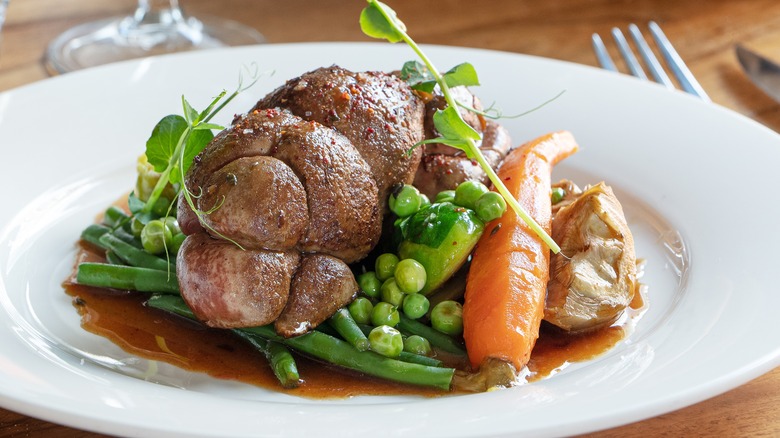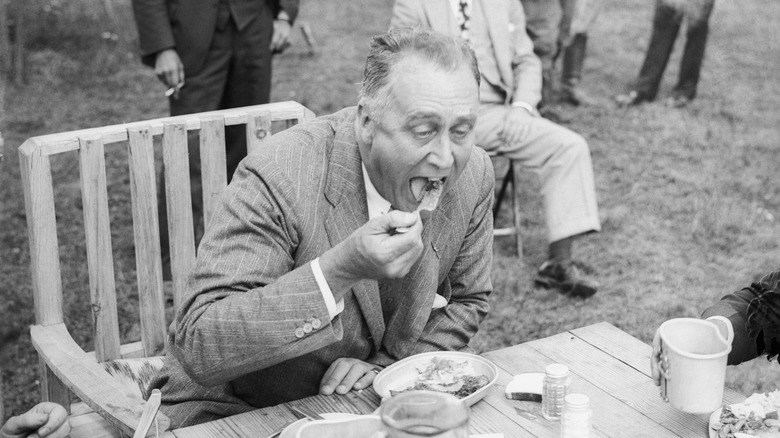Why FDR Was Forced To Eat Sweetbreads Six Days A Week
When President Roosevelt complained about eating sweetbreads allegedly six times a week, the First Lady simply educated him on all the different varied ways one could enjoy them: creamed, braised, boiled, and more. Sweetbreads are rich in nutrients and protein for a low price point, so brains and livers quickly joined the regular Depression-era White House menu. (Broiled kidneys on toast, anyone?)
In addition to being the First Lady of the United States, an LGBTQIA+ icon, and an outspoken social justice warrior, Eleanor Roosevelt was also a pretty terrible cook. Everyone's good at something, and while the diplomat and humanitarian could serve the Navy–Marine Corps Relief Society and act as chairman of the Commission on Human Rights of the United Nations with grace, creating dishes was not her strong suit.
Still, culinary prowess wasn't the point of the foods Eleanor Roosevelt was serving the White House, anyway. During the Great Depression, organ meat was popular but very much not on-trend. Foodies were eating sweetbreads out of necessity as the price of meat rose higher and higher, and Eleanor Roosevelt made it a point that the the White House shouldn't be eating any differently than the people it serves. (Quoth The Great Eleanor: "It is not fair to ask of others what you are not willing to do yourself.")
FDR wasn't really feeling his sweet tooth
Despite its cheerful-sounding name, "sweetbreads" belong to the house of offal, a catchall term for any type of miscellaneous organ meat from pretty much any animal. Sweetbreads specifically refer to the thymus gland or pancreas of cows, lambs, and pigs. Sound appetizing? FDR didn't think so, either. But, that didn't stop Eleanor Roosevelt from cooking up thrifty yet largely inedible dishes such as spaghetti with boiled carrots, gelatin salads, and cold mutton, to name a few. She even served the dishes when world leaders and dignitaries came to visit the White House.
The best thing the White House could do, she argued, was act as a model for budget-friendly cooking as the Great Depression rocked households nationwide — and she skillfully created full meals for no more than seven and a half cents per serving. Notably, not only was this move a huge anti-classist statement, but it was also an ingenious exercise in feminist politics — a symbolic rejection of dutiful housekeeping as a binarized female task of the '30s.

